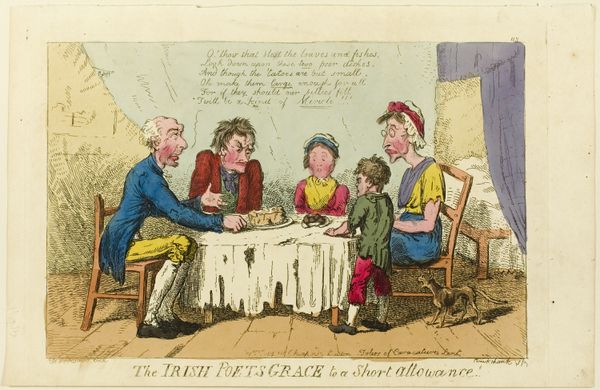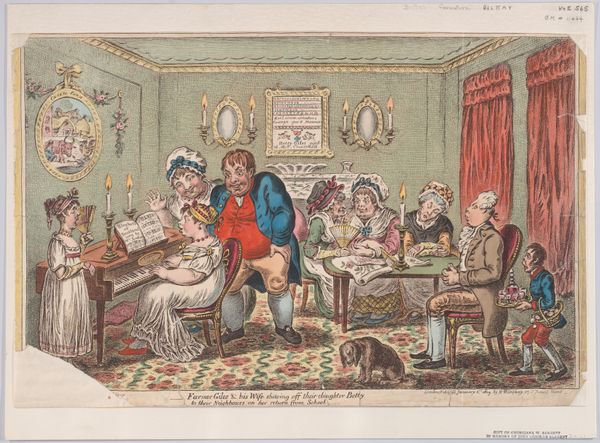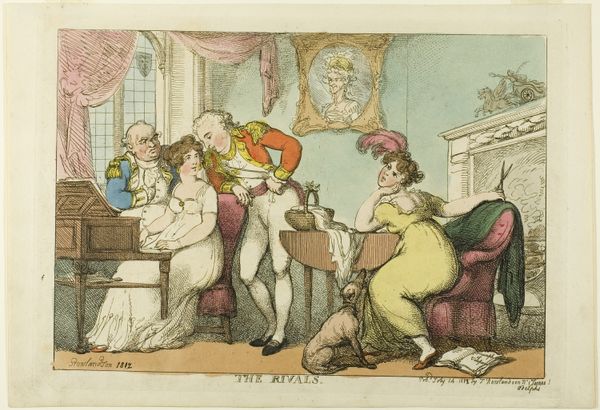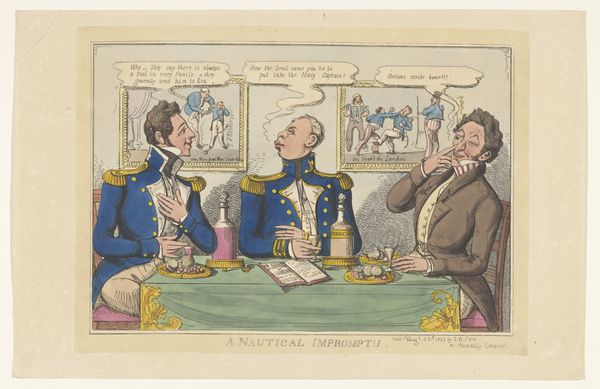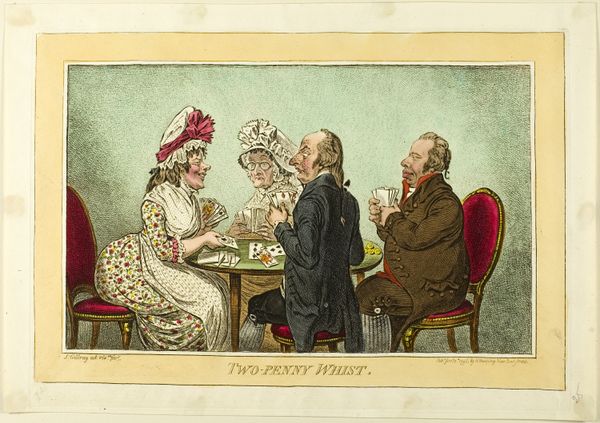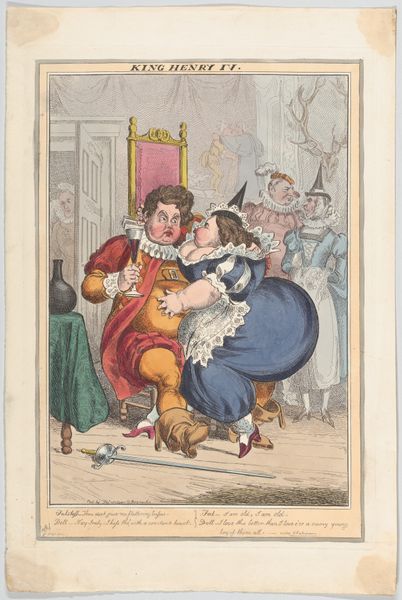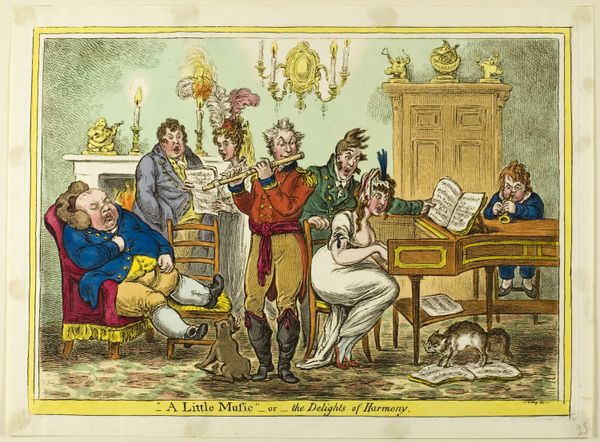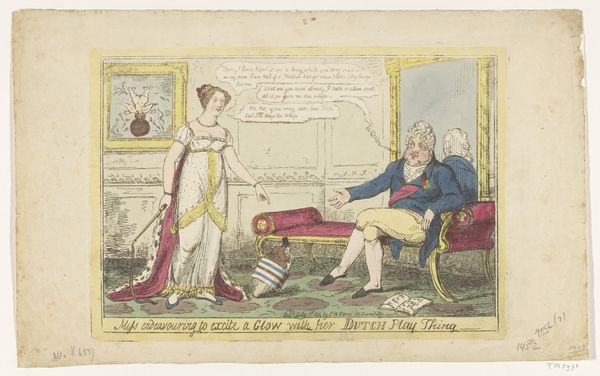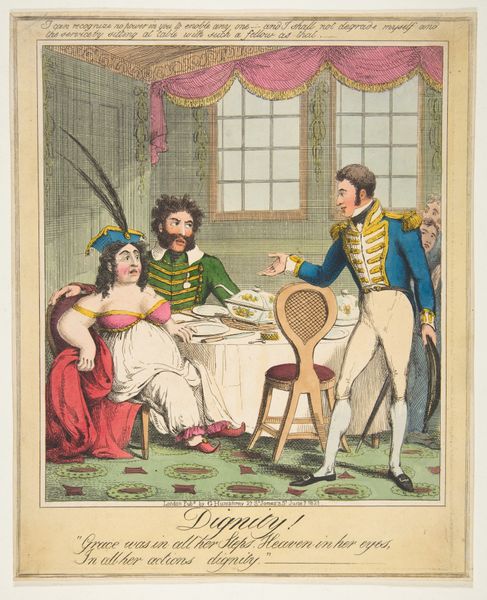
Spotprent op koning George IV en de Lord en Lady Conyngham Possibly 1827
0:00
0:00
drawing, paper, ink
#
portrait
#
drawing
#
caricature
#
paper
#
ink
#
romanticism
#
genre-painting
Dimensions: height 248 mm, width 349 mm
Copyright: Rijks Museum: Open Domain
Curator: Oh, my word, it’s deliciously wicked! I’m instantly drawn to the absurd theatricality of this… drawing. The puffed-up figures around the card table seem ready to burst! Editor: Indeed! What you’re seeing here is a print currently residing at the Rijksmuseum entitled, "Spotprent op koning George IV en de Lord en Lady Conyngham" or "A Caricature on King George IV and the Lord and Lady Conyngham", attributed to Henry Heath, possibly from 1827. The title inscribed on the image refers to it as "A Parti Carré for a Crown." It's rendered in ink on paper. But I think the term caricature barely captures it! Curator: "Parti Carré," you say… like a scandalous card game for power. You feel the social commentary just oozing out. I love the way the artist exaggerates every physical characteristic; those grotesque features speak volumes. Even their ridiculously high hats, all feathers and pomp, it's such wonderful, haughty symbolism! Editor: Absolutely, that ostentatious display tells us much about the characters' perception of themselves and what they are willing to flaunt to win. Cards themselves are a rich symbol too, often pointing to luck and deception. Notice how two of them smugly proclaim "Well done. . . . . We have got the Trick” and “We’re done” Curator: The background scenes as well… painted canvases, or are they windows into a realm where vanity reigns supreme. I like the castle imagery in those images and it makes me consider the symbolic nature of location within the grand narrative of monarchy and governance. The man on the left seems so utterly pleased with himself that he practically drips of arrogance, and so it appears he, or they have something, perhaps an ill gotten gain? The composition alone is just brilliant. Editor: Symbolism certainly pervades. Considering Heath worked in a period dominated by Romanticism, which stressed intense emotion as an authentic source of aesthetic experience, this could almost be interpreted as the artist projecting how HE sees these characters onto the art and imbuing them with it in much the same way an author pens a story to impart their truths on a specific personage or trope. It might even function on the whole as an exercise in moral satire, with vice so rampant within Royal society. It serves a cultural need to see the powerful held accountable through humor, a crucial tension release. Curator: Indeed. Well, I for one appreciate this delightful slice of 19th-century savagery! It definitely evokes strong emotions. It speaks to me now the same way it must have screamed at people way back when, Editor: Yes! For me, its ability to weave complex social critiques through accessible visuals demonstrates art’s lasting power in engaging collective memory. The card table has been set and there's still something interesting and unsettling on the table all this time later.
Comments
No comments
Be the first to comment and join the conversation on the ultimate creative platform.
